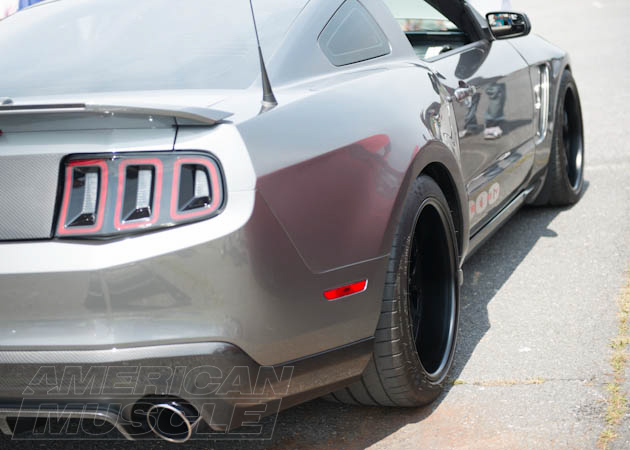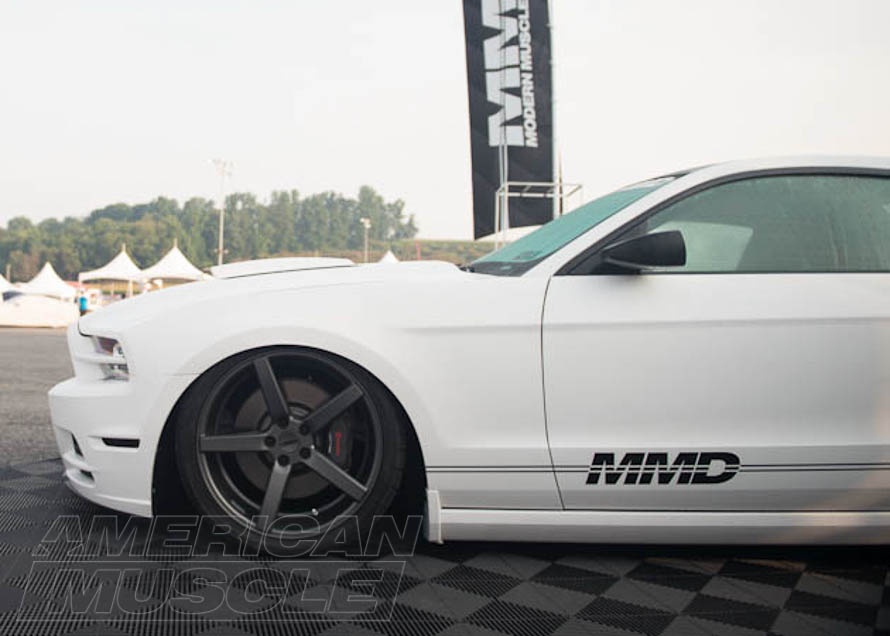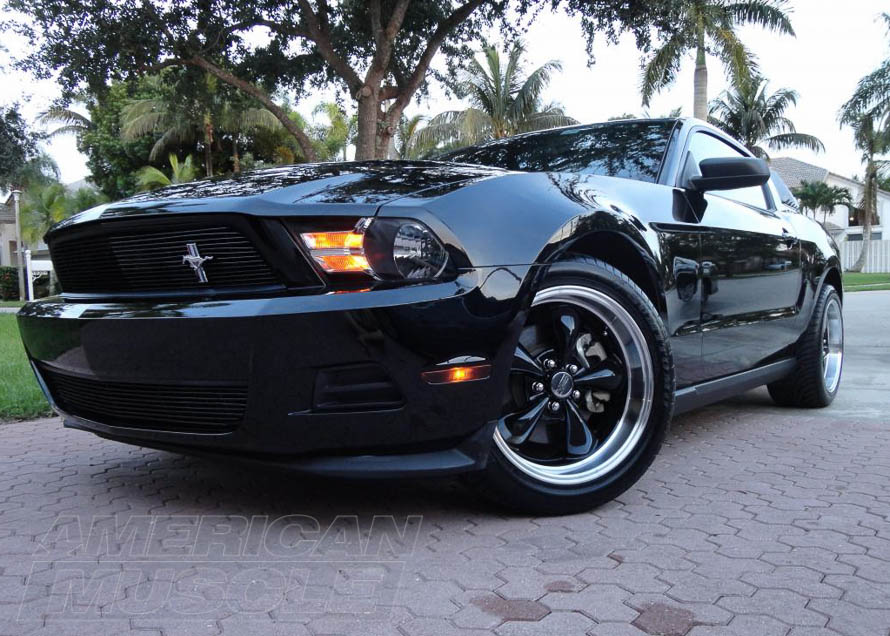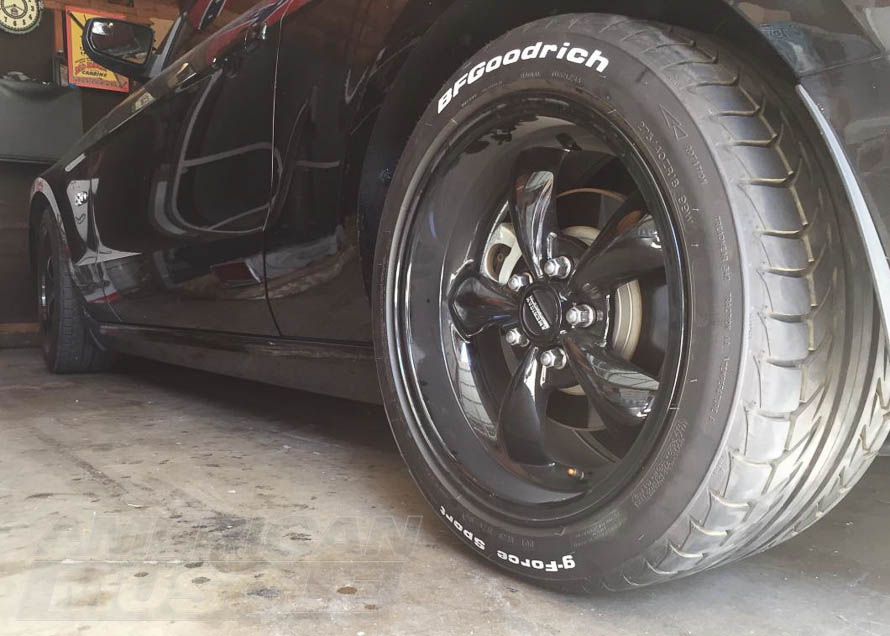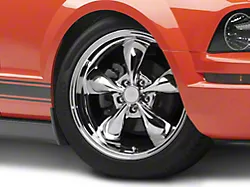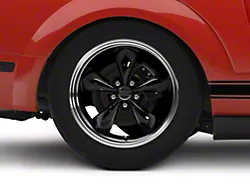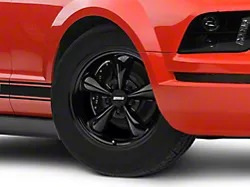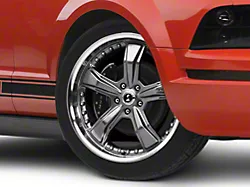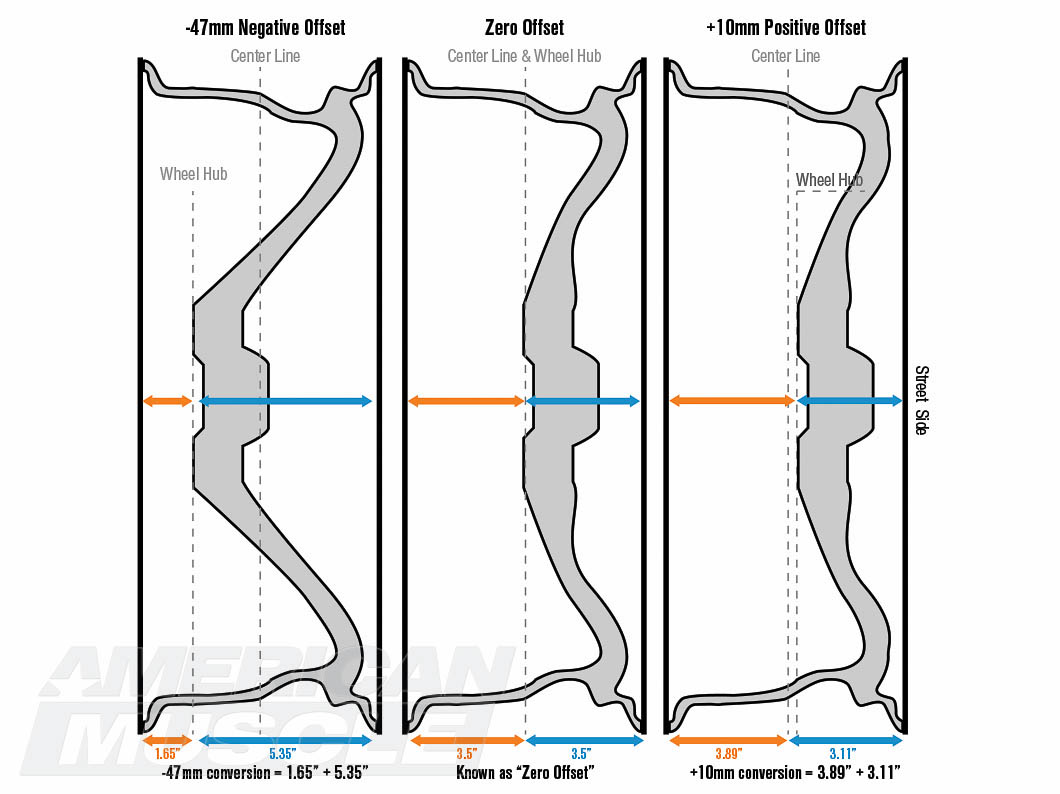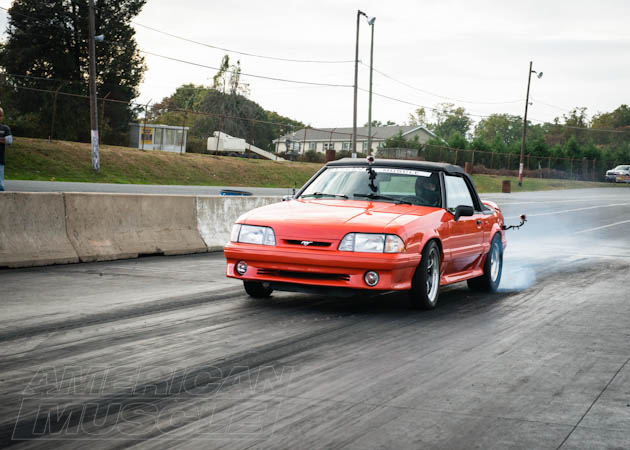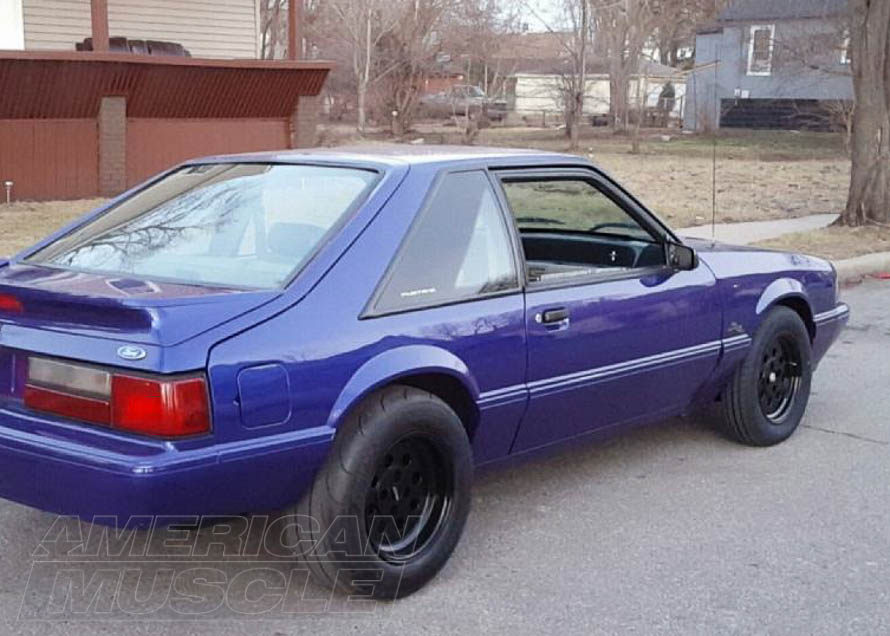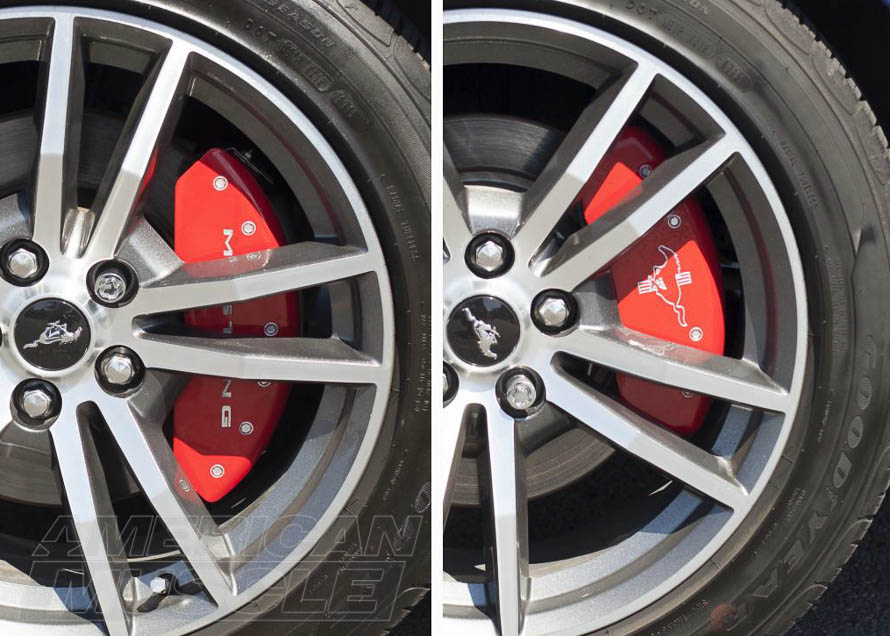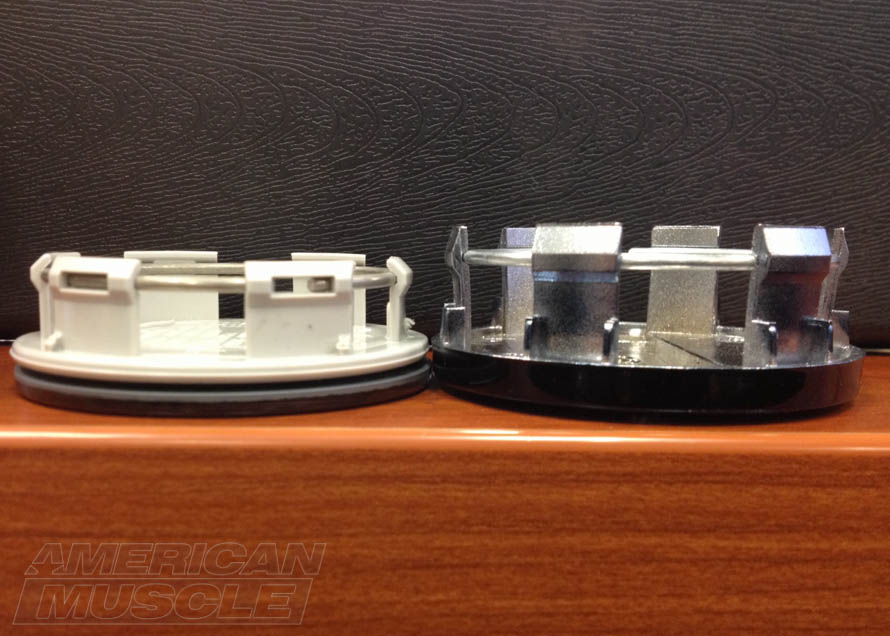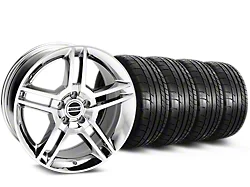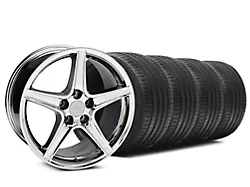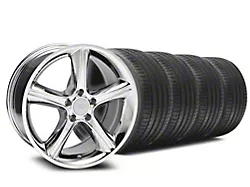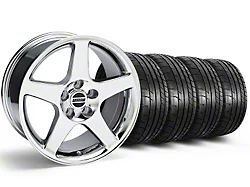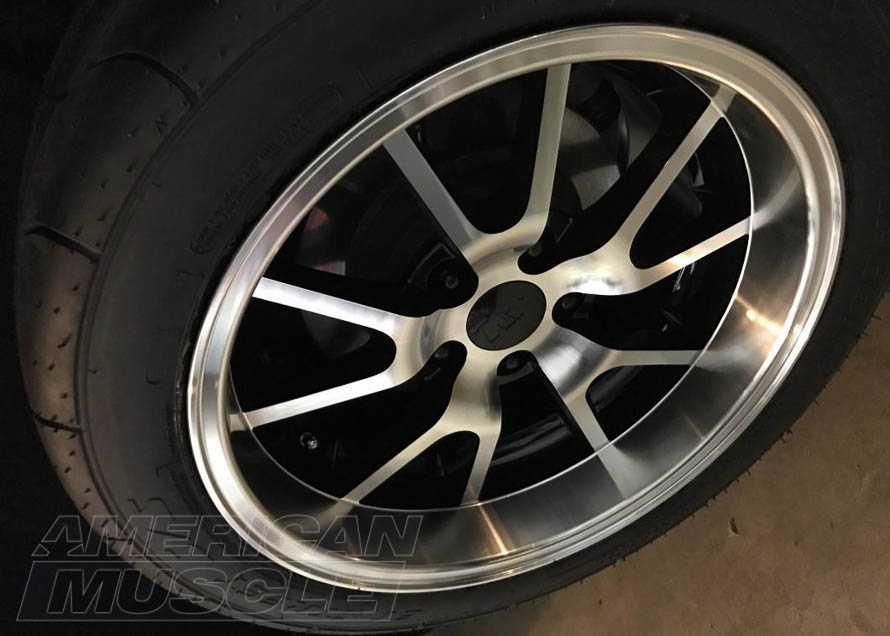| Year |
Wheel Size |
Optional wheel Sizes |
Lug Pattern |
Stud Sizing |
Center Bore |
Offset |
Max Wheel Size |
| 2019 EcoBoost |
7.5x17, 8x18 |
8.5x19, 9x19, 9x20 |
5x114.3 |
M14x1.5 |
70.5mm |
35-52.5mm |
22 inches |
| 2019 GT |
8x18, 8.5x19 |
9x19, 9.5x19, 10.5x19, 11x19, 9x20 |
| 2018 EcoBoost |
7.5x17, 8x18 |
8.5x19, 9x19, 9x20 |
5x114.3 |
M14x1.5 |
70.5mm |
35-52.5mm |
22 inches |
| 2018 GT |
8x18, 8.5x19 |
9x19, 9.5x19, 10.5x19, 11x19, 9x20 |
| 2017 EcoBoost |
7.5x17, 8x18 |
8.5x19, 9x19, 9x20 |
5x114.3 |
M14x1.5 |
70.5mm |
35-52.5mm |
22 inches |
| 2017 V6 |
|
| 2017 GT |
8x18, 8.5x19 |
9x19, 9.5x19, 9x20 |
| 2016 EcoBoost |
7.5x17, 8x18 |
8.5x19, 9x19, 9x20 |
5x114.3 |
M14x1.5 |
70.5mm |
35-52.5mm |
22 inches |
| 2016 V6 |
|
| 2016 GT |
8x18, 8.5x19 |
9x19, 9.5x19, 9x20 |
| 2015 EcoBoost |
7.5x17, 8x18 |
8.5x19, 9x19, 9x20 |
5x114.3 |
M14x1.5 |
70.5mm |
35-52.5mm |
22 inches |
| 2015 V6 |
|
| 2015 GT |
8x18, 8.5x19 |
9x19, 9.5x19, 9x20 |
| 2014 V6 |
7x17 |
8x18, 8.5x19 |
5x114.3 |
1/2"-20 |
70.6mm |
35-50mm |
22 inches |
| 2014 GT |
8x18, 8.5x19 |
8x18, 9x19 |
| 2013 V6 |
7x17 |
8x18, 8.5x19 |
5x114.3 |
1/2"-20 |
70.6mm |
35-50mm |
22 inches |
| 2013 GT |
8x18, 8.5x19 |
8x18, 9x19 |
| 2012 V6 |
7x17 |
8x18, 8.5x19 |
5x114.3 |
1/2"-20 |
70.6mm |
35-50mm |
22 inches |
| 2012 GT |
8x18, 8.5x19 |
9x19 |
| 2011 V6 |
7x17 |
8x18, 8.5x19 |
5x114.3 |
1/2"-20 |
70.6mm |
35-50mm |
22 inches |
| 2011 GT |
8x18, 8.5x19 |
9x19 |
| 2010 V6 |
7x17, 8x18 |
|
5x114.3 |
1/2"-20 |
70.6mm |
35-50mm |
22 inches |
| 2010 GT |
8x18 |
8.5x19 |
| 2009 V6 |
7x16 |
8x17 |
5x114.3 |
1/2"-20 |
70.6mm |
35-50mm |
22 inches |
| 2009 GT |
8x17 |
8.5x18 |
| 2008 V6 |
7x16 |
8x17 |
5x114.3 |
1/2"-20 |
70.6mm |
35-50mm |
22 inches |
| 2008 GT |
8x17 |
8.5x18 |
| 2007 V6 |
7x16 |
8x17 |
5x114.3 |
1/2"-20 |
70.6mm |
35-50mm |
22 inches |
| 2007 GT |
8x17 |
8.5x18 |
| 2006 V6 |
7x16 |
8x17 |
5x114.3 |
1/2"-20 |
70.6mm |
35-50mm |
22 inches |
| 2006 GT |
8x17 |
8.5x18 |
| 2005 V6 |
7x16 |
8x17 |
5x114.3 |
1/2"-20 |
70.6mm |
35-50mm |
22 inches |
| 2005 GT |
8x17 |
8.5x18 |
| 2004 V6 |
7x15, 7.5x16 |
|
5x114.3 |
1/2"-20 |
70.3mm |
35-50mm |
22 inches |
| 2004 GT |
7.5x16, 8x17 |
9x17 |
| 2003 V6 |
7x15, 7.5x16 |
|
5x114.3 |
1/2"-20 |
70.3mm |
35-50mm |
22 inches |
| 2003 GT |
7.5x16, 8x17 |
9x17 |
| 2002 V6 |
7x15, 7.5x16 |
|
5x114.3 |
1/2"-20 |
70.3mm |
35-50mm |
22 inches |
| 2002 GT |
7.5x16, 8x17 |
9x17 |
| 2001 V6 |
7x15, 7.5x16 |
|
5x114.3 |
1/2"-20 |
70.3mm |
35-50mm |
22 inches |
| 2001 GT |
7.5x16, 8x17 |
9x17 |
| 2000 V6 |
7x15, 7.5x16 |
|
5x114.3 |
1/2"-20 |
70.3mm |
35-50mm |
22 inches |
| 2000 GT |
7.5x16, 8x17 |
9x17 |
| 1999 V6 |
7x15, 7.5x16 |
|
5x114.3 |
1/2"-20 |
70.3mm |
35-50mm |
22 inches |
| 1999 GT |
7.5x16, 8x17 |
9x17 |
5x114.3 |
1/2"-20 |
70.3mm |
35-50mm |
22 inches |
| 1998 V6 |
7x15 |
|
5x114.3 |
1/2"-20 |
70.3mm |
35-50mm |
22 inches |
| 1998 GT |
7.5x16 |
8x17 |
| 1997 V6 |
7x15 |
|
5x114.3 |
1/2"-20 |
70.3mm |
35-50mm |
22 inches |
| 1997 GT |
7.5x16 |
8x17 |
| 1996 V6 |
7x15 |
|
5x114.3 |
1/2"-20 |
70.3mm |
35-50mm |
22 inches |
| 1996 GT |
7.5x16 |
8x17 |
| 1995 V6 |
7x15 |
|
5x114.3 |
1/2"-20 |
70.3mm |
35-50mm |
22 inches |
| 1995 GT |
7.5x16 |
8x17 |
| 1994 V6 |
7x15 |
|
5x114.3 |
1/2"-20 |
70.3mm |
35-50mm |
22 inches |
| 1994 GT |
7.5x16 |
8x17 |
| 1993 2.3L |
5.5x14, 6x14, 6.5x15, 7x15, 7x16 |
|
4x108 |
1/2"-20 |
63.4mm |
15-25mm |
20 inches |
| 1993 GT |
7x15, 7x16, 7.5x16, 8x17 |
| 1992 2.3L |
5.5x14, 6x14, 6.5x15, 7x15, 7x16 |
|
4x108 |
1/2"-20 |
63.4mm |
15-25mm |
20 inches |
| 1992 GT |
7x15, 7x16, 7.5x16, 8x17 |
| 1991 2.3L |
5.5x14, 6x14, 6.5x15, 7x15, 7x16 |
|
4x108 |
1/2"-20 |
63.4mm |
15-25mm |
20 inches |
| 1991 GT |
7x15, 7x16, 7.5x16, 8x17 |
| 1990 2.3L |
5.5x14, 6x14, 6.5x15, 7x15, 7x16 |
|
4x108 |
1/2"-20 |
63.4mm |
15-25mm |
20 inches |
| 1990 GT |
7x15, 7x16, 7.5x16, 8x17 |
| 1989 2.3L |
5.5x14, 6x14, 6.5x15, 7x15, 7x16 |
|
4x108 |
1/2"-20 |
63.4mm |
15-25mm |
20 inches |
| 1989 GT |
7x15, 7x16, 7.5x16, 8x17 |
| 1988 2.3L |
5.5x14, 6x14, 6.5x15, 7x15, 7x16 |
|
4x108 |
1/2"-20 |
63.4mm |
15-25mm |
20 inches |
| 1988 GT |
7x15, 7x16, 7.5x16, 8x17 |
| 1987 2.3L |
5.5x14, 6x14, 6.5x15, 7x15, 7x16 |
|
4x108 |
1/2"-20 |
63.4mm |
15-25mm |
20 inches |
| 1987 GT |
7x15, 7x16, 7.5x16, 8x17 |
| 1986 2.3L |
5.5x14, 6x14, 6.5x15, 7x15, 7x16 |
|
4x108 |
1/2"-20 |
63.4mm |
15-25mm |
20 inches |
| 1986 2.3L Turbo |
| 1986 V6 |
6x14, 6.5x15, 7x15, 7x16, 7.5x17 |
| 1986 GT |
7x15, 7x16, 7.5x16, 8x17 |
| 1985 2.3L |
5.5x14, 6x14, 6.5x15, 7x15, 7x16 |
|
4x108 |
1/2"-20 |
63.4mm |
15-25mm |
20 inches |
| 1985 2.3L Turbo |
| 1985 V6 |
6x14, 6.5x15, 7x15, 7.5x17 |
| 1985 GT |
7x15, 7x16, 7.5x16, 8x17 |
| 1984 2.3L |
5.5x14, 6x14, 6.5x15, 7x15, 7x16 |
|
4x108 |
1/2"-20 |
63.4mm |
15-25mm |
20 inches |
| 1984 2.3L Turbo |
| 1984 V6 |
6x14, 6.5x15, 7x15, 7x16, 7.5x17 |
| 1984 GT |
7x15, 7x16, 7.5x16, 8x17 |
| 1983 2.3L |
5.5x14, 6x14, 6.5x15, 7x15, 7x16 |
|
4x108 |
1/2"-20 |
63.4mm |
15-25mm |
20 inches |
| 1983 2.3L Turbo |
| 1983 V6 |
6x14, 6.5x15, 7x15, 7x16, 7.5x17 |
| 1983 GT |
7x15, 7x16, 7.5x16, 8x17 |
| 1982 2.3L |
5.5x14, 6x14, 6.5x15, 7x15, 7.5x16 |
|
4x108 |
1/2"-20 |
63.4mm |
15-25mm |
20 inches |
| 1982 2.3L Turbo |
| 1982 V6 (3.3L) |
| 1982 (4.2L) |
| 1981 2.3L |
5.5x14, 6x14, 6.5x15, 7x15, 7.5x16 |
|
4x108 |
1/2"-20 |
63.4mm |
15-25mm |
20 inches |
| 1981 2.3L Turbo |
| 1981 V6 (3.3L) |
| 1981 V6 (4.2L) |
| 1980 2.3L |
5.5x14, 6x14, 6.5x15, 7x15, 7.5x16 |
|
4x108 |
1/2"-20 |
63.4mm |
15-25mm |
20 inches |
| 1980 2.3L Turbo |
| 1980 V6 (3.3L) |
| 1980 V6 (4.2L) |
| 1979 2.3L |
5.5x14, 6x14, 6.5x15, 7x15, 7.5x16 |
|
4x108 |
1/2"-20 |
63.4mm |
15-25mm |
20 inches |
| 1979 2.3L Turbo |
| 1978 2.3L |
5x13, 5.5x13, 6x14 |
|
4x108 |
1/2"-20 |
63.4mm |
|
| 1978 2.8L |
5.5x13, 6x14, 6.5x15 |
| 1978 4.9L |
5.5x13, 6x14, 6x15, 7x15 |
| 1977 2.3L |
5x13, 5.5x13, 6x14 |
|
4x108 |
1/2"-20 |
63.4mm |
|
| 1977 2.8L |
5.5x13, 6x14, 6.5x15 |
| 1977 4.9L |
5.5x13, 6x14, 6x15, 7x15 |
| 1976 2.3L |
5x13, 5.5x13, 6x14 |
|
4x108 |
1/2"-20 |
63.4mm |
|
| 1976 2.8L |
5.5x13, 6x14, 6.5x15 |
| 1976 4.9L |
5.5x13, 6x14, 6x15, 7x15 |
| 1975 2.3L |
5x13, 5.5x13, 6x14 |
|
4x108 |
1/2"-20 |
63.4mm |
|
| 1975 2.8L |
5.5x13, 6x14, 6.5x15 |
| 1975 4.9L |
5.5x13, 6x14, 6x15, 7x15 |
| 1974 2.3L |
5x13, 5.5x13, 6x14 |
|
4x108 |
1/2"-20 |
63.4mm |
|
| 1974 2.8L |
5.5x13, 6x14, 6.5x15 |
| 1974 4.9L |
5.5x13, 6x14, 6x15, 7x15 |
| 1973 4.1L |
6x14, 7x14, 6.5x15, 7x15 |
|
4x114.3 |
1/2"-20 |
62mm |
|
| 1973 4.9L |
6x14, 7x14, 6.5x15, 7x15, 7.5x16 |
5x114.3 |
70.3mm |
| 1973 5.8L |
| 1972 4.1L |
6x14, 7x14, 6.5x15, 7x15 |
|
4x114.3 |
1/2"-20 |
62mm |
|
| 1972 4.9L |
6x14, 7x14, 6.5x15, 7x15, 7.5x16 |
5x114.3 |
1/2"-20 |
70.3mm |
| 1972 5.8L |
| 1971 4.1L |
6x14, 7x14, 6.5x15, 7x15 |
|
4x114.3 |
1/2"-20 |
62mm |
|
| 1971 4.9L |
6x14, 7x14, 6.5x15, 7x15, 7.5x16 |
5x114.3 |
1/2"-20 |
70.3mm |
| 1971 5.8L |
| 1970 3.3L |
6x14, 7x14, 6.5x15, 7x15 |
|
4x114.3 |
1/2"-20 |
62mm |
|
| 1970 4.1L |
| 1970 4.9L |
6x14, 7x14, 6.5x15, 7x15, 7.5x16 |
5x114.3 |
1/2"-20 |
70.3mm |
| 1970 5.8L |
| 1969 3.3L |
6x14, 7x14, 6.5x15, 7x15 |
|
4x114.3 |
1/2"-20 |
62mm |
|
| 1969 4.1L |
| 1969 4.9L |
6x14, 7x14, 6.5x15, 7x15, 7.5x16 |
5x114.3 |
70.3mm |
| 1969 5.8L |
| 1969 6.4L |
| 1968 3.3L |
6x14, 7x14, 6.5x15, 7x15 |
|
4x114.3 |
1/2"-20 |
62mm |
|
| 1968 4.7L |
6x14, 7x14, 6.5x15, 7x15, 7.5x16 |
5x114.3 |
70.3mm |
| 1968 4.9L |
| 1968 6.4L |
| 1967 3.3L |
6x14, 7x14, 6.5x15, 7x15 |
|
4x114.3 |
1/2"-20 |
62mm |
|
| 1967 4.7L |
6x14, 7x14, 6.5x15, 7x15, 7.5x16 |
5x114.3 |
70.3mm |
| 1967 6.4L |
| 1966 3.3L |
6x14, 7x14, 6.5x15, 7x15 |
|
4x114.3 |
1/2"-20 |
62mm |
|
| 1966 4.7L |
6x14, 7x14, 6.5x15, 7x15, 7.5x16 |
5x114.3 |
70.3mm |
| 1965 3.3L |
6x14, 7x14, 6.5x15, 7x15 |
|
4x114.3 |
1/2"-20 |
62mm |
|
| 1965 4.3L |
6x14 |
7x14, 6.5x15, 7x15, 7.5x16 |
5x114.3 |
70.3mm |
| 1965 4.7L |
6x14, 7x14, 6.5x15, 7x15, 7.5x16 |
|
| 1964 3.3L |
6x14, 7x14, 6.5x15, 7x15 |
|
4x114.3 |
1/2"-20 |
62mm |
|
| 1964 4.3L |
6x14 |
7x14, 6.5x15, 7x15, 7.5x16 |
5x114.3 |
70.3mm |
| 1964 4.7L |
6x14, 7x14, 6.5x15, 7x15, 7.5x16 |
|

